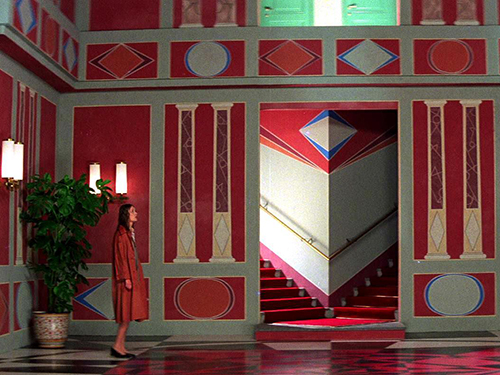
“To begin with, I imagined the story set in a children’s school, not of teens. I thought that it could be interesting that the school was for very young girls, eight, ten years old. This was the first version. The distributor strongly opposed this choice, and the film was made also with American money, from Fox, and they were against that too. So I changed the script and raised the girl’s age, but I kept a sort of childish attitude, so the characters behaved like children. The decor too... I used little tricks, for example the doors have the handles not at a normal height, but at face level, the height at which a child of 8 years old would find the handle. It gives the impression of dealing with children, even though they have adult bodies.”
Dario Argento1
“‘We wanted to recreate the colours of old Technicolor and Disney films,’ explains Argento. ‘The vivid, strong colours in those films stayed in my memory from childhood. Amazingly, Tovoli discovered some old Kodak stock in a lab in America and we used that. But there was such a limited amount, we only had enough to shoot one or two takes so we did a lot of rehearsals before each shot. That’s why Suspiria took so long to film: 16 weeks.’
[...]
The truth is Argento always knew this film was going to be special. He knew the moment Tovoli first projected a reel of test footage and he scrambled over the seats to get to the screen, desperate to touch the flickering colours. He knew every morning as he walked on set at the De Paolis studios, and every late night editing at his Moviela. And he definitely knew on 4th February 1977 when, sat in his car outside a cinema on Suspiria’s opening night, he watched the theatre doors fly open: ‘People came running out, screaming, telling people in the queue ‘Don’t go in! Don’t go in! It’s all witches!’ It just made everyone in line want to get in even more... it was amazing.’”
Ben Cobb2
“Dario Argento’s terror masterpiece is a strange work even for that stylistic champion. Like Brian De Palma, his contemporary (and probable acolyte), Argento’s cinematic gamesmanship and love of macabre subjects is, above all, a meditation on the movie screen as tectonic space – a canvas, yes, but also a silk screen, a puzzle box, a set of sliding doors that can be used to reveal anything. Also like De Palma, he drew on the disparate legacies of Hitchcock and Mario Bava in inventing a new kind of thriller where the act of watching is taken advantage of and the importance of narrative is spurned in favour of looking, both soothing and shocking the eye at once.”
Frederick Heath3
- 1Dario Argento cited in “Red, Blue, and Giallo: Dario Argento’s Suspiria,” Max Thornton, Bitch Flicks, (October 2013).
- 2Ben Cobb, “Dario Argento on his Macabre Masterpiece, Suspiria,” Another Man, (March 2018).
- 3Frederick Heath, “Suspiria (1977),” Ferdy on Films, (March 2008).

